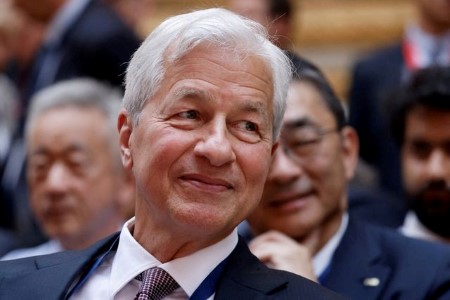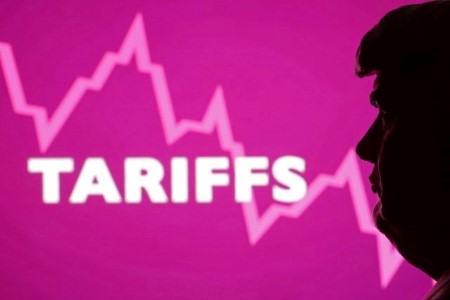NEW YORK – Stock indexes posted their biggest one-day gains in years, with the S&P 500 recording its largest rise since 2008, while the dollar gained and Treasuries pared losses on Wednesday after US President Donald Trump declared a temporary US pause on tariffs.
The announcement by Trump came in the afternoon after days of market turmoil, with bond prices and the US dollar selling off earlier in the day on fears that the administration’s plans to raise tariffs to levels last seen more than 100 years ago would push the economy into recession.
The president announced an immediate 90-day tariff pause for many countries even as he raised the levy on Chinese imports to 125%.
The news of a pause brought sudden relief to the market. The S&P 500 ended 9.5% higher, while the Nasdaq rose 12.2% in its biggest one-day gain since January 3, 2001, and its second-biggest on record. But investors said uncertainty about the longer-term plan for tariffs persisted.
“This is the pivotal moment we’ve been waiting for,” said Gina Bolvin, president of Bolvin Wealth Management Group in Boston. “The timing couldn’t be better, coinciding with the start of earnings season.”
“However, uncertainty looms over what happens after the 90-day period, leaving investors to grapple with potential volatility ahead,” Bolvin added.
The upcoming US quarterly reporting period will offer more insights into the health of corporate America, with several US banks, including JPMorgan Chase, due to report results on Friday.
Benchmark 10-year Treasury prices had also trimmed earlier losses after the US Treasury Department saw strong demand in an afternoon auction of the notes.
The yield on benchmark US 10-year notes rose 6.8 basis points to 4.328%. It earlier reached 4.515%, the highest since February 20. Bond yields move opposite to prices.
A sharp selloff in Treasury prices this week and reports of large liquidations of bonds had raised concerns about deteriorating market liquidity.
The dollar was lower before Trump’s announcement.
The selloff in US assets since Trump’s announcement of sweeping tariffs on April 2 has been broad and deep, with Deutsche Bank analysts in a note earlier on Wednesday saying that the “market has lost faith” in them and the world was entering uncharted territory in the global financial system.
The dollar index, which measures the greenback against a basket of currencies, including the yen and the euro, rose 0.25% to 103.03, with the euro down 0.08% at USD 1.0947.
Against the Japanese yen, the dollar strengthened 1.04%, while the dollar rose 1.01% versus the Swiss franc.
US stocks sharply extended gains on Trump’s announcement.
The Dow Jones Industrial Average rose 2,962.86 points, or 7.87%, to 40,608.45, the S&P 500 rose 474.13 points, or 9.52%, to 5,456.90 and the Nasdaq Composite rose 1,857.06 points, or 12.16%, to 17,124.97.
MSCI’s gauge of stocks across the globe rose 42.32 points, or 5.70%, to 785.28. Earlier in the day, the pan-European STOXX 600 index ended down 3.5%.
Oil prices also jumped on the tariff news.
Brent futures rose USD 2.66, or 4.23%, to settle at USD 65.48 a barrel. US West Texas Intermediate crude futures rose USD 2.77, or 4.65%, to USD 62.35.
(Reporting by Caroline Valetkevitch in New York, additional reporting by Amanda Cooper in London; Additional reporting by Stella Qiu in Sydney; Editing by Gareth Jones, Alex Richardson, Chizu Nomiyama, Emelia Sithole-Matarise, and Matthew Lewis)







 DOWNLOAD
DOWNLOAD













